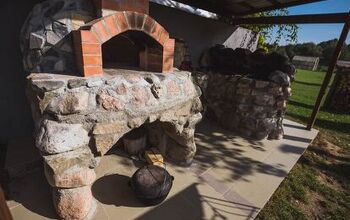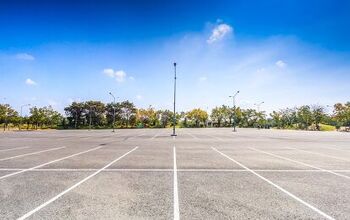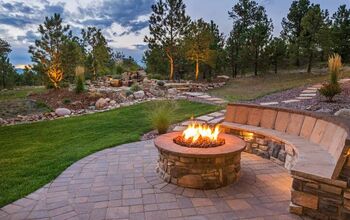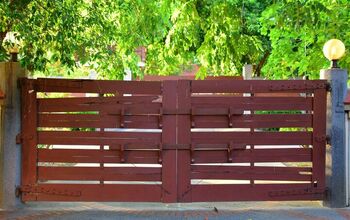How To Build A Solar Generator (Step-by-Step Guide)

Have the lights in your home ever flickered out? The fear of a power outage is real. However, a solar generator can put your mind at ease. They are quiet, efficient, and portable. Whether you reside in the country or city, solar generators are a useful tool. It may seem like solar generators are super high tech – while they are cool, a portable solar generator can be built by any motivated person.
To build a solar generator, you will need four primary components: a solar panel, a battery, a battery charge controller, and an inverter to convert stored energy into a usable form.
Building a solar generator can be a huge benefit. Yes, you can purchase the generators pre-made. However, in the next section, we will explain some of the downsides of buying pre-made and the benefits of making your own.
If you’re looking to install a generator that runs your entire home, see our article on if a whole house generator raises the home’s value.
Reasons to Build a Solar Generator
Premade solar generators have their uses. If you’re not apt for DIY construction, or you just don’t have the time, then buying a fully constructed solar generator is a viable option.
But, if you have the ambition, there are several reasons to build one yourself.
Self-built solar generators are:
- Less expensive
- able to output more energy
- Customizable
- Easily repaired if needed
- A chance to learn about solar
Let’s dive into it.
Building a Solar Generator is Less Expensive than Buying
For a high capacity solar generator, you might be looking at a price tag of over two-thousand dollars. And that price is for a semi-portable model. If you want to install a large system, you’re going to be spending even more.
When you build your own, you can expect to pay nearly half the price on parts. And get a generator will probably give you more power than the fully assembled models.
Not only do you save money outright, but, were the generator ever to need service, you would be able to do it yourself – instead of paying to have it shipped back, or for a technician to visit your home.
Finally, the generator we will be explaining how to build today is a portable version; however, if you wanted an extensive solar power system installed in your home, you might be paying hundreds of dollars towards install fees. There are no install fees when you do it yourself.
You Can Build a Solar Generator with More Energy Output than Commercial Models
The commercially made and preconstructed generators are known to lack optimal power. This has a lot to do with the parts used. When you build your solar generator, you can use an inverter rated at higher capacities. Also, you can install a battery that best meets your situation.
And, of course, you can install a much larger solar panel. Many solar generators come with an undersized solar panel. Your solar panel size will directly impact how fast your battery charges and how much power you can use for extended periods.
Many people report that their self built solar generators charge faster than the ready-made models. When you build yourself, you can optimize the solar panels to their full potential.
You Can Customize Your Solar Generator
When you buy a pre-made solar generator, you pretty much get what you get. But what if you want a built-in floodlight? Or maybe you want your battery enclosed in a completely waterproof case. When you build yourself, you can incorporate everything you want.
Maybe you’re thinking: I want a power system to charge my whole house! Well, you’ve got to walk before you can run. But, when you start by teaching yourself how to build the basics, you can add advanced parts later.
Easy to Repair
Since you built it yourself, you know exactly how each part works. When something wears out, you can replace or repair it on the spot. This easy repair is in opposition to purchasing a pre-made generator. When the factory-made generator breaks, you will struggle to fix it, or you’ll have to send it back to the manufacturer – losing valuable time in the process.
A Chance to Learn about Solar Energy
Right now, solar energy is growing everywhere. The sooner you become acquainted with solar power, the further ahead of everyone else you will be.
Solar power is all about renewable energy and being self-reliant. What could be more self-sufficient than the ability to build your solar generator? Alright, let’s learn how to do it.
Five Steps to Building a Solar Generator
It’s time to learn the basic components of a solar generator.
Here’s a list of equipment you’ll need:
- Battery
- Battery charge regulator
- Inverter
- Solar panel
- You’ll need wire, both negative and positive
- Box to place everything
This list is the general equipment needed for a basic model. As you learn how everything fits together, you’ll be able to add more advanced parts. Be sure to determine your energy needs for your solar generator when purchasing parts. Here is a useful article for figuring your needs -ait also contains a full equipment list.
Here are the steps:
- Test everything
- Place the battery
- Place the inverter
- Install the charge regulator
- Attach solar panels
Be sure to do some research on basic electrical principles. There are endless free resources on the internet for the specifics of making proper connections and circuits. Don’t do anything without properly researching. Proceed with caution. There are risks when working with electrical equipment.
Step 1: Test Components of Your Solar Generator
You want to make sure everything works before you begin attaching things or making more permanent connections. Testing will also help you avoid frustration later on in the process.
For instance, you might think you did something wrong when really, you just have a faulty piece of equipment. Testing also gives you a basic understanding of making the correct wire connections before assembling everything. Test each component by wiring to the battery. Ensure everything turns on and works as it should.
Step 2: Place Battery in Your Container
The container you purchase should be sturdy, as it will need to hold your battery and protect it from moisture.
Install your battery in the corner of your box, so you have room for other components. Some batteries can be placed on their side, while others can’t. Take this into consideration when positioning things in your power box.
After you have the battery placed, everything else connects—sort of like the branches of a tree.
Step 3: Attach Inverter to the Case
Now place your inverter. You want to be mindful of the heat. If your inverter is packed too close to anything else, it can cause problems. Some inverters are made to shut off if they over-heat.
When making electrical connections, start with negative and then positive. Be sure to make connections snug and properly ventilate if heat is an issue.
Step 4: Battery Charge Regulator
Place your charge regulator. The regulator will tell you how much energy you’re using, and when your battery is charged fully. Also, this will help protect your battery from over or undercharging.
Step 5: Attach Solar Panels to Battery
You may want first to connect a port – sort of like a plug for the solar panel. This port will allow you to detach your battery pack from your solar panel for easier transport.
Be sure to outline where you will place the connection sites properly. You may also want to put some caulk around any ports leading to the outside of the battery pack. After attaching your solar panel, your solar generator is ready to test. Let it charge in full sun. If it’s not working correctly, check all your wire connections.
Last thing. It isn’t needed to build your initial solar generator, but a battery maintainer will certainly extend your battery’s life. The battery maintainer is built into your battery so you can plug it into the wall when it’s not in use.
If you’re curious, see our article on how much a 1000 watt generator can run.
Related Questions
A solar generator is a power source that can be used in emergencies and everyday activities, like camping or off-grid living. These generators gain all their electricity from the sun. A solar generator is perfectly quiet and requires very little up-keep. As solar technology becomes more advanced, more and more people are purchasing or building solar generators.
How Can I Generate Electricity at My Home for Free?Solar power is one of the best options available for generating free electricity. It’s completely passive and requires very little upkeep. Another way is wind turbines. However, most people prefer solar for powering their homes. Wind turbines require more maintenance due to their moving parts. Also, it’s hard to generate much power with a small turbine.
How Long Does a Solar Generator Last?Solar generators can last over 20 years. The life of the solar panels will determine how long a solar generator lasts. You may have to change out your battery after several years, or as technology increases. But, as long as your solar panels are still intact, you can keep harnessing the power of the sun.

Gideon is a writer and hobby woodworker. He enjoys working on projects small and large-everything from crafting boxes and benches, to replacing carpet and landscaping a yard.
More by Gideon Zielinski



























![Cost To Drill A Well [Pricing Per Foot & Cost By State]](https://cdn-fastly.upgradedhome.com/media/2023/07/31/9074980/cost-to-drill-a-well-pricing-per-foot-cost-by-state.jpg?size=350x220)